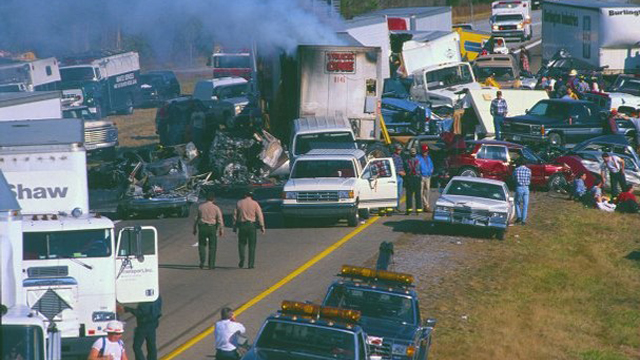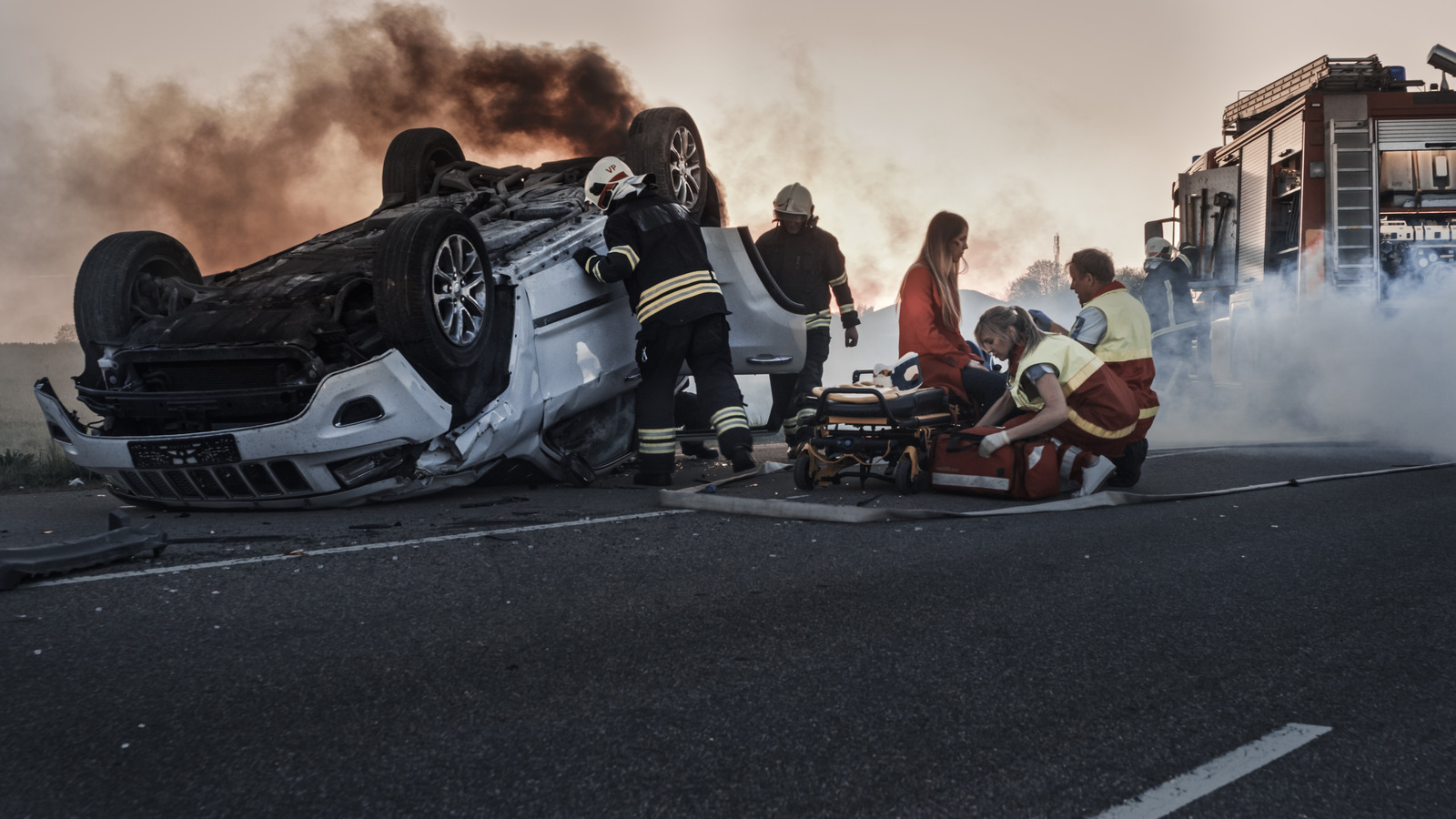The 8 Worst Car Accidents Ever - Tragedies That Shook The World
Explore the harrowing details of the eight worst car accidents in history, each one leaving an indelible mark on society. From royal tragedies to catastrophic explosions, these accidents have led to significant changes in safety regulations and public awareness.

Jun 27, 2024
Car accidents are an unfortunate reality of modern life, often leading to devastating consequences. Throughout history, there have been numerous car accidents that stand out due to their severity, loss of life, and impact on society. This article explores eight of the worst car accidents ever, delving into the details of what happened, the aftermath, and the lessons learned.
The Princess Diana Accident (1997)
One of the most infamous car accidents occurred on August 31, 1997, when Princess Diana, her companion Dodi Fayed, and driver Henri Paul crashed in the Pont de l'Alma tunnel in Paris. The crash, attributed to high speed and the paparazzi chase, resulted in the deaths of Diana, Fayed, and Paul. Bodyguard Trevor Rees-Jones was the sole survivor, though severely injured.
Investigations revealed that Henri Paul was under the influence of alcohol and prescription drugs, and the vehicle was traveling at over 100 km/h, more than twice the speed limit. This tragedy highlighted the dangers of high-speed chases and intoxicated driving, prompting stricter traffic regulations and a reevaluation of paparazzi conduct.
The Los Alfaques Disaster (1978)
On July 11, 1978, a tanker truck carrying 23 tons of liquid propylene exploded near the Los Alfaques campsite in Spain, leading to one of the deadliest vehicular accidents in history. The explosion killed 217 people and injured over 200. The intense heat caused by the explosion incinerated vehicles and structures within a 300-meter radius.
The cause was traced back to overloading of the tanker and inadequate safety measures. This disaster underscored the need for stringent regulations on hazardous material transportation and led to significant changes in how such materials are handled globally.
The Chualar Bus Crash (1963)
The Chualar bus crash, one of the worst in U.S. history, occurred on September 17, 1963, in Chualar, California. A train collided with a flatbed truck carrying Mexican farmworkers, resulting in the deaths of 32 people and injuries to 25 others. The bus driver, unaware of the approaching train, had attempted to cross the tracks.
This tragedy brought to light the hazardous conditions faced by migrant workers and the dire need for improved safety measures at railway crossings. It led to the implementation of better warning systems and stricter enforcement of traffic laws at crossings.
The Guadalajara Gas Explosion (1992)
On April 22, 1992, a series of sewer explosions caused by gasoline leakage into the sewer system devastated the downtown area of Guadalajara, Mexico. The explosion, triggered by a spark, led to the deaths of over 200 people, with 1,500 injured and 15,000 left homeless. The explosions also destroyed 1,100 buildings and heavily damaged 600 others.
Investigations revealed that a gas leak from the Pemex gasoline distribution system was the primary cause, exacerbated by poor maintenance and outdated infrastructure. This disaster prompted significant reforms in urban planning, infrastructure maintenance, and emergency response protocols in Mexico and beyond.
The Greeley Stampede Parade Crash (1961)
On July 4, 1961, during the Greeley Stampede Parade in Greeley, Colorado, a speeding car plowed into a crowd of spectators, killing six people and injuring 42. The driver, later identified as under the influence of alcohol, lost control of the vehicle and veered into the parade route.
This incident highlighted the critical importance of event safety and traffic control during public gatherings. In response, stricter regulations were implemented for parade and event planning, including more robust barriers and better coordination with law enforcement.
The Sanchong Skywalk Collapse (2013)
In Taiwan, on June 3, 2013, a skywalk under construction in Sanchong District collapsed, leading to a chain-reaction accident involving multiple vehicles. Six people were killed, and dozens were injured as the debris fell onto the busy roadway below. Investigations revealed that substandard construction materials and poor engineering practices were to blame.
This tragedy underscored the need for rigorous construction standards and regular inspections to ensure public safety. The government implemented stricter building codes and increased oversight to prevent such incidents in the future.
The Carrollton Bus Collision (1988)
On May 14, 1988, in Carrollton, Kentucky, a church bus carrying 63 passengers collided with a pickup truck driven by Larry Mahoney, who was intoxicated. The impact caused the bus’s gas tank to rupture and ignite, resulting in a fire that killed 27 people and injured 34 others. It remains one of the deadliest bus accidents in U.S. history.
The Carrollton bus collision brought significant attention to the dangers of drunk driving and the need for better vehicle safety standards. It led to nationwide campaigns against drunk driving and the introduction of more stringent DUI laws and improved bus safety features.
The A7 Motorway Pile-Up (2013)
On November 30, 2013, thick fog and high speeds caused a massive pile-up involving over 100 vehicles on the A7 motorway near Sivens, France. The accident killed seven people and injured dozens more. The dense fog reduced visibility to near zero, creating a deadly chain reaction as drivers were unable to stop in time.
This catastrophic event highlighted the need for better traffic management and warning systems in adverse weather conditions. Following the accident, authorities implemented measures such as enhanced fog detection systems, better lighting, and more frequent warnings to drivers about hazardous conditions.
FAQs About The 8 Worst Car Accidents Ever: Tragedies That Shook The World
What Are The Eight Worst Car Accidents Ever Mentioned In This Article?
The article covers eight of the most devastating car accidents in history, including the Princess Diana accident (1997), the Los Alfaques disaster (1978), the Chualar bus crash (1963), the Guadalajara gas explosion (1992), the Greeley Stampede Parade crash (1961), the Sanchong skywalk collapse (2013), the Carrollton bus collision (1988), and the A7 motorway pile-up (2013).
Why Are These Car Accidents Considered The Worst Ever?
These accidents are considered the worst due to the high number of fatalities, severe injuries, and significant impact on public safety regulations. They involved dramatic and tragic circumstances that highlighted critical flaws in vehicle safety, infrastructure, or human behavior.
How Did The Princess Diana Accident Impact Road Safety Regulations?
The Princess Diana accident underscored the dangers of high-speed chases and driving under the influence. It prompted stricter traffic regulations and a reevaluation of paparazzi conduct to prevent similar tragedies in the future.
What Caused The Los Alfaques Disaster, And What Changes Followed?
The Los Alfaques disaster was caused by a tanker truck carrying liquid propylene that exploded due to overloading and inadequate safety measures. This disaster led to significant changes in the transportation of hazardous materials and stricter regulations on tanker safety.
What Were The Key Factors Behind The Chualar Bus Crash?
The Chualar bus crash occurred when a train collided with a truck carrying Mexican farmworkers. The driver attempted to cross the tracks without realizing the train was approaching. This incident highlighted the need for improved safety measures at railway crossings and better working conditions for migrant workers.
Wrap Up
The eight worst car accidents ever described here reflect a range of causes, from human error and mechanical failure to environmental factors and inadequate safety measures. Each of these tragedies resulted in significant loss of life and prompted changes in laws, safety standards, and public awareness.
By examining these accidents, we gain valuable insights into the critical importance of road safety, the need for continuous improvements in vehicle and infrastructure design, and the vital role of responsible driving. While we can never completely eliminate the risk of car accidents, learning from past mistakes helps us create a safer future for all road users.
